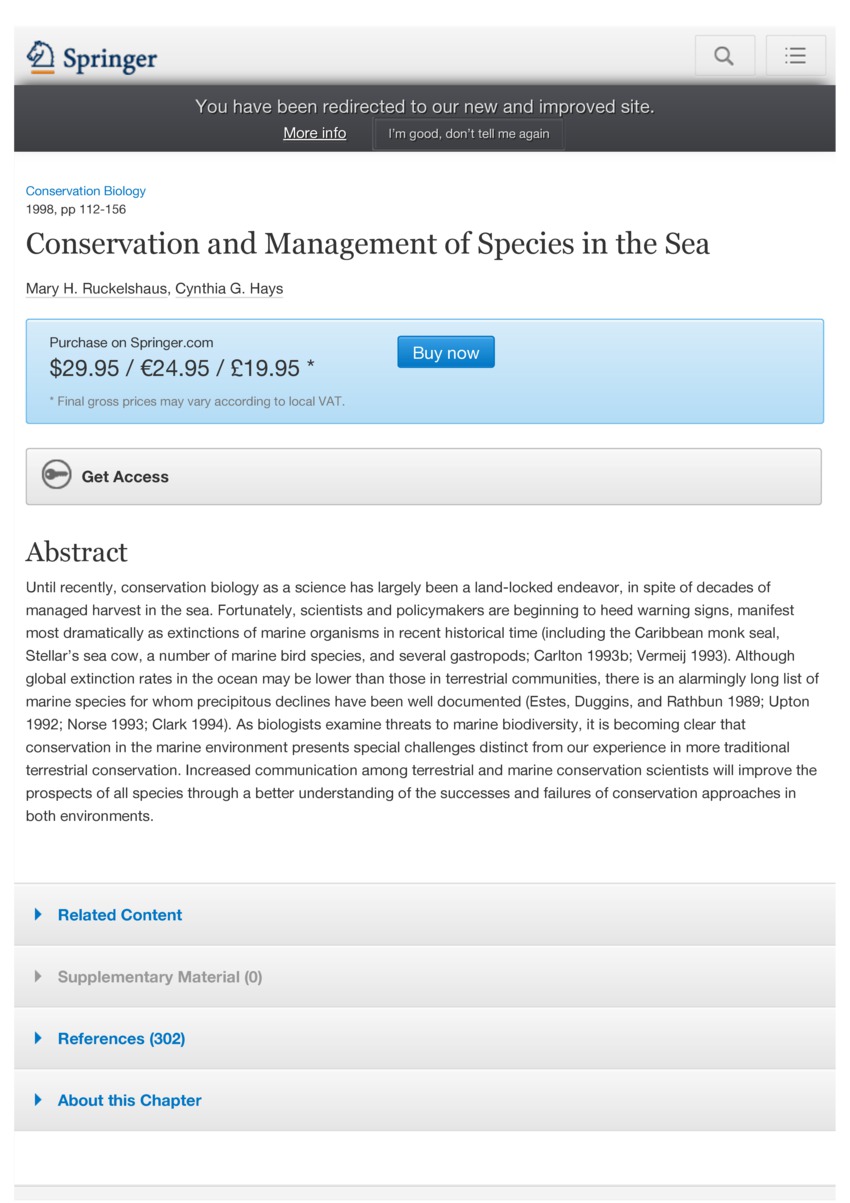Book Chapter
Chapter 6. Conservation and Management of Species in the Sea
Until recently, conservation biology as a science has largely been a land-locked endeavor, in spite of decades of managed harvest in the sea. Fortunately, scientists and policymakers are beginning to heed warning signs, manifest most dramatically as extinctions of marine organisms in recent historical time (including the Caribbean monk seal, Stellar’s sea cow, a number of marine bird species, and several gastropods; Carlton 1993b; Vermeij 1993). Although global extinction rates in the ocean may be lower than those in terrestrial communities, there is an alarmingly long list of marine species for whom precipitous declines have been well documented (Estes, Duggins, and Rathbun 1989; Upton 1992; Norse 1993; Clark 1994). As biologists examine threats to marine biodiversity, it is becoming clear that conservation in the marine environment presents special challenges distinct from our experience in more traditional terrestrial conservation. Increased communication among terrestrial and marine conservation scientists will improve the prospects of all species through a better understanding of the successes and failures of conservation approaches in both environments.
Publisher - Springer
Subjects - Conservation
http://dx.doi.org/10.1007/978-1-4615-6051-7_6
Citation: Ruckelshaus MH, Hays CG. 1997 In: L. FP, Kareiva PM, editors. Conservation Biology: For the Coming Decade. 2nd edition. New York (NY): Springer-Verlag. ISBN: 978-0412096617 Chaper 6. Conservation and Management of Species in the Sea. p 112-156. http://dx.doi.org/10.1007/978-1-4615-6051-7_6
